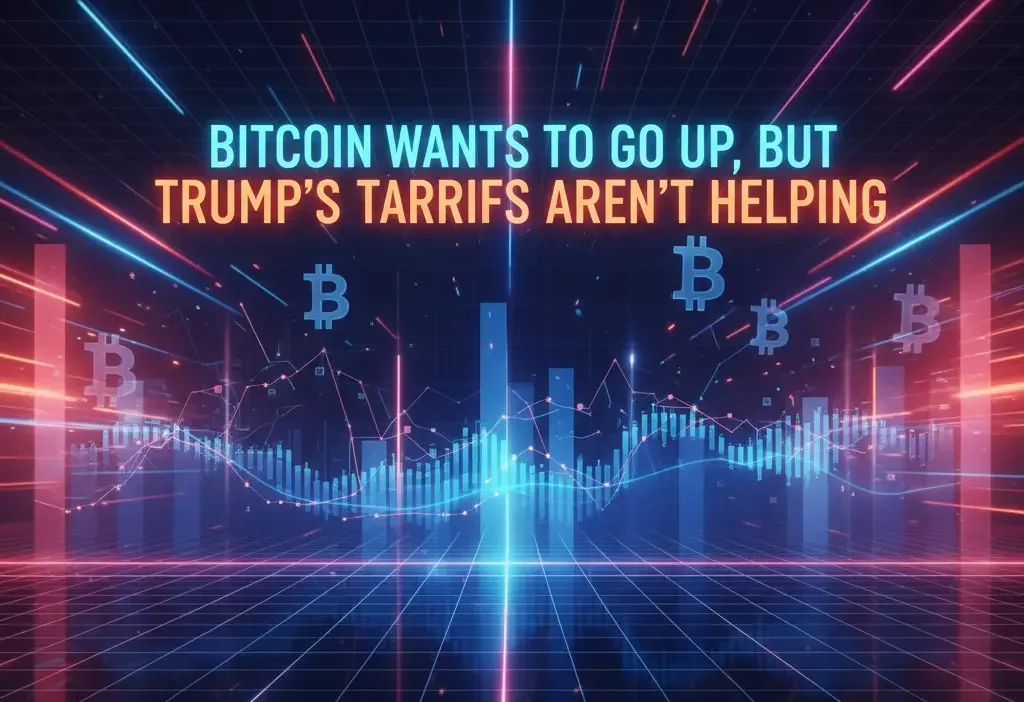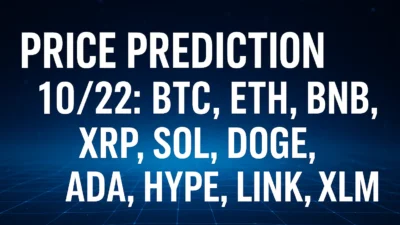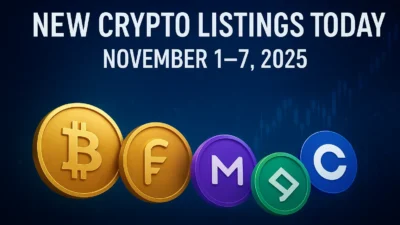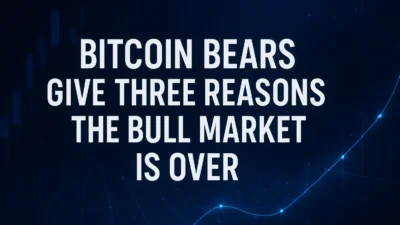Introduction
Bitcoin bulls would prefer a clean runway upward, but headlines keep serving turbulence instead. Rising concern about Trump tariffs has become a recurring market stressor: whenever tariff rhetoric heats up, risk assets — including Bitcoin — have shown sharp intraday drawdowns and forced deleveraging. This post dissects how Trump tariffs relate to crypto price action, why traders are pulling back from long leverage, what on-chain and derivatives signals to watch, and practical ways to position or hedge as the story evolves. Yahoo Finance
Why the tariff story matters to crypto markets

Tariffs are not just trade policy — they are a lightning rod for market sentiment. Large, sudden tariff announcements raise fears of supply chain disruption, higher inflation, and tighter growth — all of which can sap investors’ appetite for high-beta assets like cryptocurrencies. In October, an abrupt tariff move triggered a rapid crypto sell-off that erased significant market capitalization and liquidated leveraged positions. That episode showed how Trump tariffs can act as an accelerant for volatility across exchanges and OTC desks. Forbes
Market reaction so far: price swings, liquidations and headlines
When tariff headlines land, the market reaction typically follows a familiar arc: knee-jerk sell orders, futures funding spikes, and concentrated liquidations in highly-leveraged longs. Reuters and sector reporters documented episodes in which Bitcoin and ether tumbled on flareups tied to the US-China trade rhetoric — an observation that highlights how geopolitics can flip risk appetite in minutes. That link between macro headlines and crypto price swings is why traders now watch Trump tariffs announcements as immediate event risk windows. Reuters
Why traders are avoiding long leverage
Leverage magnifies returns — and losses. In a market where Trump tariffs can produce sudden directional moves, many traders have chosen to:
- Reduce or remove long leverage entirely during headline risk windows.
- Prefer options or collars to protect spot exposure rather than naked leveraged positions.
- Rely on wider stops and smaller position sizing when trading around tariff talks.
Avoiding long leverage is a risk-management choice: with liquidation thresholds close on 10–20% intraday moves, traders recognize that tariff shocks can quickly turn profitable longs into forced liquidations and cascade selling. The October volatility events made that lesson painfully clear for many participants. Forbes
On-chain signals: are whales and exchanges showing stress?
On-chain flows can reveal whether supply is moving toward exchanges (which typically signals selling pressure) or off exchanges (which can indicate accumulation). During tariff scares, analysts often see a spike in exchange inflows as traders move collateral on-chain to prepare for margin calls or to enable rapid trading. Conversely, calming headlines or trade-deescalation often coincides with exchange outflows and recovering prices. Monitoring these flows provides a near-real-time read of how Trump tariffs headlines are impacting market structure beneath the surface. Tools like Glassnode, CoinGlass and major exchange dashboards are especially useful during these episodes. CoinDesk
The macro linkage — how tariffs affect rates, FX and risk assets
Tariffs can increase inflation expectations by pushing up consumer prices for affected goods. Persistent inflation can force central banks to keep rates higher for longer, which raises the discount rate for all risky assets — Bitcoin included. When Trump tariffs push markets to reprice growth and inflation, equities and crypto can fall together as risk premia rise. That macro channel explains why crypto is rarely isolated: traders treat the space as part of a broader risk asset class that moves with global growth and policy risk. Barron’s
Behavioral impact: fear, positioning, and crowded trades
When an administration signals more tariffs, market behavior changes quickly. Two behavioral phenomena tend to show up:
- De-risking: Institutions and leveraged traders reduce exposure to avoid headline-driven slippage.
- Crowding: Once a narrative (e.g., “tariffs = crypto crash”) takes hold, retail momentum and short sellers can pile in, creating crowded downside trades that blow up in the opposite direction if the news is less negative than feared.
These dynamics mean that while Trump tariffs increase near-term downside risk, they also raise the potential for sharp snapbacks if headlines disappoint or get softened — a classic increased-volatility regime that favors nimble risk management. Yahoo Finance
Practical indicators to watch (data checklist)
If you want to track how Trump tariffs are affecting Bitcoin in real time, use this checklist:
- Exchange inflows/outflows (large, sudden inflows can signal selling readiness).
- Futures open interest and funding rates (rising OI with a falling BTC price suggests fresh shorts or squeezed longs).
- Liquidation heatmaps (watch for clustered long liquidation prices).
- Implied volatility and options skew (a rising skew shows demand for downside protection).
- Macro calendar and policy headlines — time and content matter: a tariff announcement from the White House will move markets more than a distant hint in a tweet. CoinDesk
Trading and hedging ideas (not financial advice)
Given the elevated headline risk from Trump tariffs, here are measured ways participants might approach markets:
- Hedged exposure: Long spot with protective puts or collars instead of naked leverage. This limits downside while allowing upside participation.
- Options plays: Buy put spreads to hedge or sell covered calls to finance protection (be mindful of volatility crush).
- Reduce leverage: Lower margin use around known policy windows.
- Structured re-entry: Dollar-cost average into weakness after the initial headline move rather than trying to catch the bottom.
- Event straddle (for professionals): Advanced traders might buy straddles to profit from a large move in either direction, but this is expensive and depends on implied vol expectations.
All approaches should be sized to personal risk tolerance — in a Trump tariffs environment, position sizing becomes more important than market timing.
Scenario planning: three plausible paths
Scenario 1 — Tariff escalation hits hard (bearish): A surprise, heavy tariff announcement triggers immediate risk-off. BTC gaps down, longs are liquidated, and broader risk assets fall — a repeat of earlier October shocks. This is the high-probability tail risk that traders fear when talking about Trump tariffs. Yahoo Finance
Scenario 2 — Tariff rhetoric but de-escalation (mixed): Headlines flash tough language but negotiations or clarifications follow quickly. The initial sell-off is reversed within days as risk sentiment recovers — this pattern has produced sharp snapbacks in prior episodes. CoinDesk
Scenario 3 — Tariff surprise is softened (bullish): If political actors reach a temporary trade framework or concessions are announced, the market can rally. Crypto often reacts positively when trade risks fade and global liquidity expectations improve — a path that would reverse the negative technical setups created by Trump tariffs headlines. BeInCrypto
Managing emotions and headlines
The psychological aspect of trading during tariff cycles is often underestimated. News moves fast, and FOMO or fear can lead to poor decisions. Best practices:
- Pre-define horizons and exit rules before the headline hits.
- Avoid checking prices obsessively; use alerts for key levels instead.
- Treat initial moves as information, not final verdicts — wait for the second or third confirmation signal before adding large positions.
When Trump tariffs dominate the newsfeed, discipline beats instincts.
Longer-term structural implications
Repeated use of tariffs as an economic tool can make markets more sensitive to policy shocks and reduce the predictability of macro cycles. If Trump tariffs become a recurring headline driver, risk premia for high-beta assets may stay elevated, institutional allocations to crypto could oscillate more sharply, and volatility premia in derivatives markets could remain permanently higher. That structural shift changes both trading strategies and capital allocation decisions: buyers may demand higher expected returns to compensate for the policy risk embedded in pricing. Barron’s
Conclusion
Trump tariffs are more than political theater for crypto traders — they are a real, measurable source of market stress that can trigger forced deleveraging, liquidity squeezes, and rapid repricing across risk assets. For traders, the appropriate response is not fear, but preparedness: tighten risk controls, prefer hedged exposures, and monitor the data signals that show whether a headline is being bought or sold. If you treat Trump tariffs as an event-risk variable and plan for both sides of the outcome, you’ll be better positioned to survive and potentially profit from the volatility that follows. Reuters
Disclaimer
This post is for educational and informational purposes only and is not financial, investment, tax, or legal advice. Cryptocurrency trading is risky and can result in the loss of capital. Always perform your own research (DYOR) and consult a licensed financial professional before making investment decisions. Do at your own risk.
Author Review
Do at your own risk.
Author: Ali hamza




